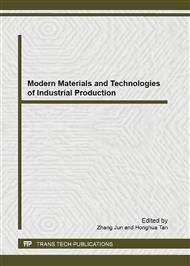p.244
p.249
p.254
p.261
p.266
p.273
p.277
p.280
p.287
Experimental Study on First Flush Effects of Storm-Runoff on Slope Field
Abstract:
Precipitation runoff is the main driving factor which leads to soil erosion and nutrient transfer. In the experiment, an artificial rainfall simulator was used to study the migration amount of organic matter, nitrogen, phosphorus and potassium, volume of the soil erosion and its particle size composition in the earlier runoff, under a certain condition of rainstorm intensity and different slopes. The test results show that the migration amount of nitrogen, phosphorus, potassium, etc. is more than 70% of the respectively total loss in the first 30 minutes of runoff. Under different slope conditions, clay content in the runoff sediment within the first ten minutes is more than subsequent 10min and the rest time. According to the test results, under different slope conditions, there are obvious initial flushing effects of storm-runoff.
Info:
Periodical:
Pages:
266-272
Citation:
Online since:
September 2013
Authors:
Keywords:
Price:
Сopyright:
© 2013 Trans Tech Publications Ltd. All Rights Reserved
Share:
Citation:


